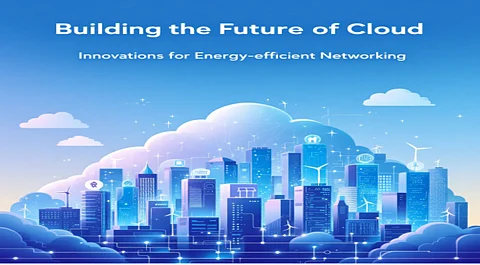

As the world becomes increasingly dependent on online services, the cloud computing sector faces a turning point between performance needs and sustainability aspirations. The energy needs of enormous data centers have grown exponentially, raising environmental concerns. In this scenario, Venkateswarlu Poka, an energy-optimized networking expert provides much-needed perspectives on solutions transforming the landscape of cloud infrastructure. This article discusses the most important strategies reshaping energy efficiency in distributed systems and charting a sustainable path for digital operations in the future.
The growth of cloud infrastructure has also led to a simultaneous increase in power consumption. As data centers account for about 2% of the world's electricity, sustainability is at the forefront. Optimizing the way that power is being used not only by servers, but also by the supporting infrastructures—is critical. This requires an inclusive strategy that addresses performance, dependability, and environmental accountability. With data volumes and services expanding, balancing energy consumption with digital performance is not only desirable but also essential for industry success over the long term.
Cooling technologies account for almost half of the power consumed in a data center. Traditional air-based technologies grapple with today's server densities. Liquid and free cooling technologies currently provide energy savings of as much as 40%. Such systems enhance thermal control while reducing energy requirements, enabling high performance and improved efficiency. Advances in cooling also lower hardware failure rates, further prolonging the life of mission-critical equipment and adding to operational savings. With more facilities migrating to high-density environments, thermal management innovations will be essential.
scheduling of workload is revolutionizing cloud resource management. Algorithms keep track of usage to allocate work dynamically, minimizing idle time and energy wastage. Scheduling optimized can provide 30% savings during peak usage times and 40% off-peak times. It increases efficiency without compromising service reliability. It also enables real-time scaling of infrastructure, enabling data centers to address variable demand without depending on spare hardware.
Dynamic Voltage and Frequency Scaling (DVFS) tunes processor power depending on task loads, reducing energy consumption by 20% to 50%. It makes sure systems operate in optimal power without wasting energy, particularly in irregular workloads. The technology has been particularly important in regulating the use of energy in large server farms where compute loads may randomly change.
Renewable energy is becoming the norm in cloud computing. Hybrid configurations with solar or wind and grid power can reduce carbon footprints by 60%. Smart grids and on-site batteries increase reliability and enable up to 50% of a building's energy requirement to be supplied with clean energy. Green energy integration decreases not just environmental footprint but also mitigates risk from pricing volatility and regulatory risk.
Energy-efficient designs are incorporated in modern facilities. Optimized floor plans, efficient transformers, and heat recovery systems can reduce overall energy consumption by 40%. PUE ratings of as low as 1.2 are now attained by some data centers, whereas older designs had a rating of 2.0. Recovered heat is recycled for heating or industrial uses. These environmentally friendly designs also help achieve certifications and standards that can enhance brand reputation and compliance.
Streaming media uses up a lot of bandwidth and power. Edge caching and adaptive routing cut traffic and energy consumption by more than 30%. They also alleviate server stress, improving delivery networks with increasing content demand. Streaming providers that implement these technologies not only save money but also enhance user experience through increased speed and dependability of delivery.
The expansion of IoT networks also brings new energy challenges. Efficient communication protocols and edge computing limit cloud workloads by 40%. Power management techniques also help prolong device battery life by as much as 60%, lowering overall energy consumption. With an estimated billion-plus connected devices due to go online, optimizing the networks is essential for scalable and sustainable cloud support.
AI is revolutionizing cloud environment energy management. Predictive programming maximizes resources, cutting wastage by up to 30%. Combined with newer hardware and cooling technology, overall energy efficiency can be improved by 50%, indicating an era of autonomic, self-optimizing data centers. These smart systems are able to identify inefficiency before it gains momentum, meaning continuous optimization without much human touch.
In summary, Venkateswarlu Poka's work offers a very clear vision of the future of cloud computing, one where sustainability and energy efficiency take the lead. With advances in workload management, renewable penetration, and AI-based systems, the sector is transforming to keep pace with current needs while minimizing its footprint on the environment. These advances represent a clear turning point towards more intelligent, environmentally friendly digital infrastructure, one that is robust, economical, and compatible with international ambitions towards sustainability.
